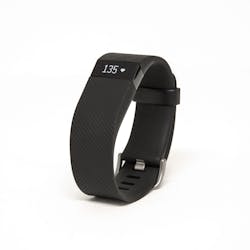Fitbit has released findings from a recent study showing that its wearable device can detect nearly 50 percent of COVID-19 cases one day before participants reported the onset of symptoms with 70 percent specificity.
Wearables, like Fitbit trackers and smartwatches, are being used in research studies from institutions such as the Scripps Research Translational Institute, the Stanford Medicine Healthcare Innovation Lab, and others to see if mobile health data can help detect the early onset of infectious diseases, even before symptoms start.
In May, Fitbit announced a COVID-19 study aimed at building an algorithm that detects COVID-19 before symptoms start. In just over two months, more than 100,000 Fitbit users across the U.S. and Canada have enrolled, with more than 1,000 positive cases of the virus reported. “This study presents an exciting opportunity to see how the power of the Fitbit community will help us better understand this new and complex disease,” officials noted.
According to company leaders in an Aug. 19 blog post, the early research findings have been submitted for publication in a peer-reviewed journal. Thus far, Fitbit officials say they are encouraged to see physiological signs of disease detected by Fitbit devices simultaneously with study participants’ reporting the onset of COVID-19 symptoms, and in some cases even before.
“This is important because people can transmit the virus before they realize they have symptoms or when they have no symptoms at all. If we can let people know they should get tested a day before symptoms begin, they can isolate and seek care sooner, helping to reduce the spread of COVID-19,” Conor Heneghan, director of research and algorithms at Fitbit, wrote in the blog post.
Researchers contend that the study reinforces that breathing rate, resting heart rate and heart rate variability (HRV) are all useful metrics for indicating onset of illness and are best tracked at night, when the body is at rest. The research shows that HRV, which is the beat-to-beat variation of the heart, often decreases in people who are exhibiting symptoms of illness, while resting heart rate and breathing rate are often elevated. In some cases, those metrics begin to signal changes nearly a week before participants reported symptoms.
The research further found that shortness of breath and vomiting are the symptoms most likely to predict that someone with COVID-19 will need to be hospitalized, while sore throat and stomachache were the symptoms least likely to predict the need for hospitalization.
What’s more, researchers are seeing that the most common symptom reported by individuals with COVID-19 was fatigue, which was present in 72 percent of participants reporting having the disease. This was followed by headache (65 percent), body ache (63 percent), decrease in taste and smell (60 percent), and cough (59 percent). Of note, fever was present in just 55 percent of people reporting COVID-19, an indicator that temperature screening alone may not be enough to understand who might be infected.
Meanwhile, mild cases (those who recovered at home on their own) show a median duration of eight days, while moderate cases (those who recovered at home with help from others) last about a week longer, with a median duration of 15 days. For severe cases (patients who end up requiring hospitalization), the median duration of illness was approximately 24 days. But this duration had a large spread, with several cases lasting longer than two months, researchers pointed out.
Some other specific findings include:
- On average, heart rate variability hits its lowest point the day after symptoms are reported
- Increases in resting heart rate normalize, on average, at least 5 to 7 days after the start of symptoms
- Breathing rate peaks typically on day two of symptoms, but there is a slight elevation, on average, for up to three weeks after symptoms start
Fitbit officials stated, “It’s clear that our bodies start to signal impacts from the disease before more noticeable symptoms appear. With these initial signals identified, we’ll continue our work in developing an algorithm to detect diseases like COVID-19 and focus on expanded research in a real-world environment.”


